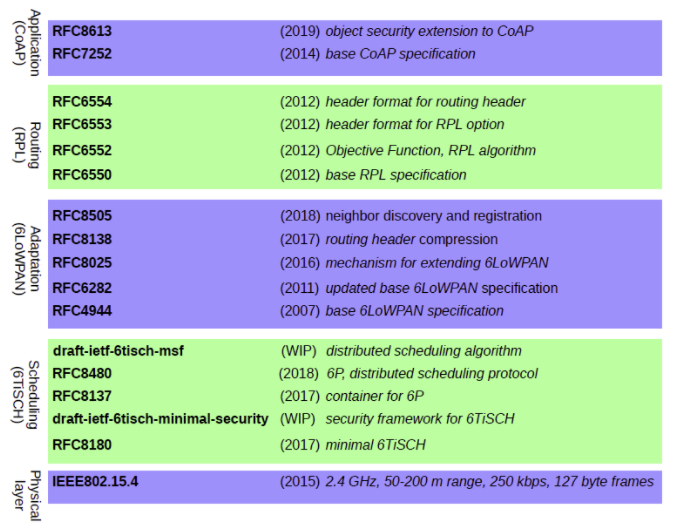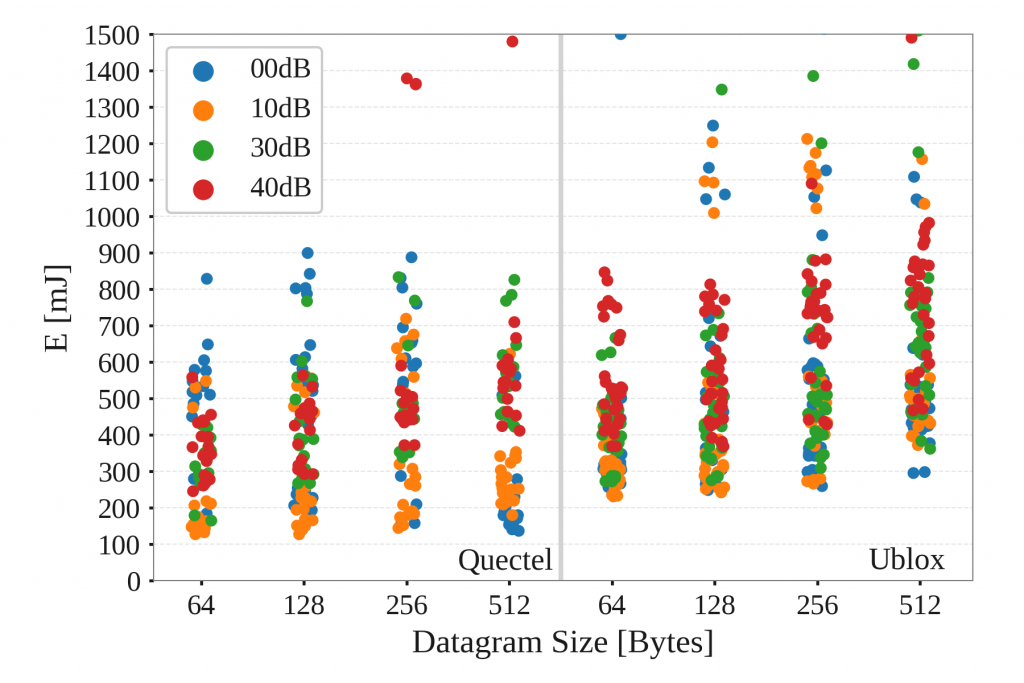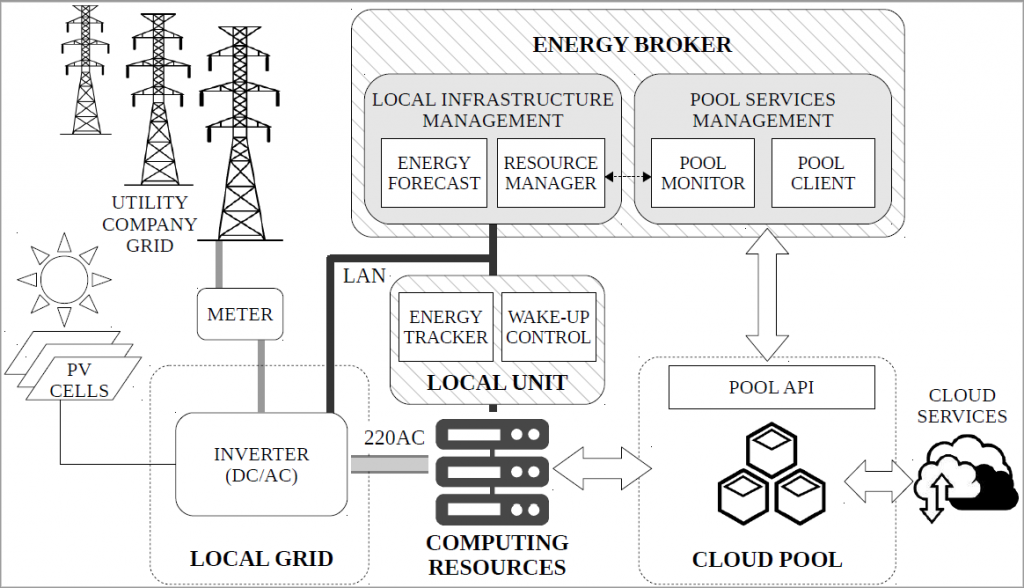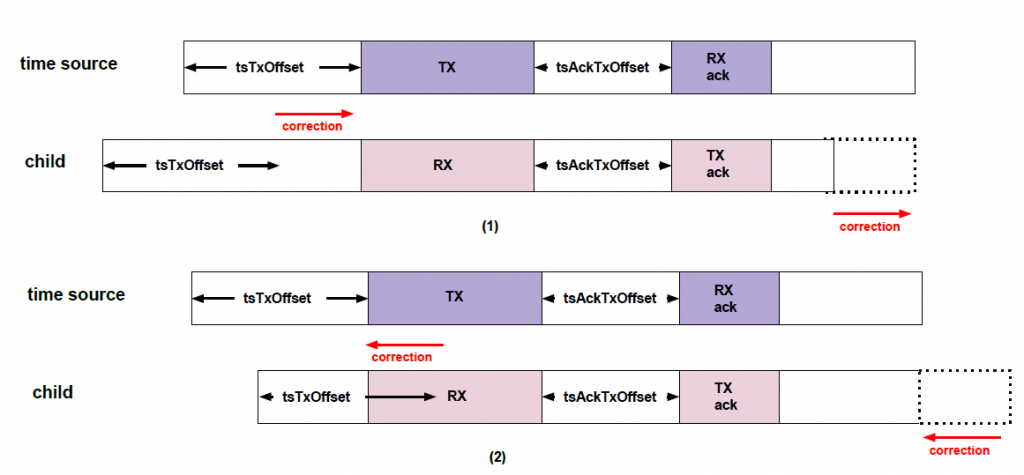IETF 6TiSCH

We have been involved in the development of the IEEE802.15.4 Time Slotted Channel Hopping MAC layer and the further development of the IETF 6TiSCH stack. We are authors of some of the RFCs for this standard protocol stack targeting industrial and building automation. We are also co-authors and maintainers of the OpenWSN protocol stack, providing an open source implementation of the 6TiSCH ecosystem. We collaborate with numerous companies in the area to advise and support their implementation of the different RFCs.
LoRaWAN
LoRaWAN is a widely adopted protocol stack for large scale long range IoT applications. LoRaWAN relies on a patented modulation commercialized by Semtech and referred to as LoRa. It exploits chirp spread spectrum techniques combined with convolutional codes for robustness. Lately Semtech announced a new physical layer that targets larger scale applications, enabling satellite-located gateways. This technology is referred to as LoRa-E. In the last years we have been deeply involved in the evaluation of this technological ecosystem and produced numerous studies regarding its performance.

NB-IoT Characterization

We have evaluated NB-IoT from an end user perspective. We wanted to understand the delay, energy consumption and capacity of the network using commercially available devices. We have observed that the connection cost is high in terms of energy and discussed its performance compared to other LPWAN technologies. We have all the tools to perform further evaluations of the technology and have assessed different companies in the use of the technology
Sustainable Edge Computing
We are interested in the reuse of excess energy from local, small scale renewable energy sources. Battery storage or injecting the excess energy to the grid when it is generated are the only real options today. We research new energy uses, envisioning a global edge computing infrastructure powered by these excess energy. We investigate how computing can be moved along the infrastructure following the sun and wind paths.

Synchronization in Wireless Networks
In the last years we have addressed technical challenges to improve the performance of wireless networks. In particular we looked at how to keep node’s synchronization while minimizing the impact in the energy consumption and duty cycle of the devices that need to synchronize.
Smart Clocks
SmartClocks is a mechanism to synchronize devices on a wireless network, resulting in power and duty cycle savings. The mechanism is applicable to all wireless networks, but is specially designed to minimize the communication overhead due to synchronization, thus being more suitable for low power, restricted duty cycle networks such as LPWANs. The idea behind the mechanism is to keep track of the clock drift and characterize/learn it during the lifetime of the application. During node’s lifetime synchronization is maintained by correcting the drift rate, given environmental and aging conditions, learning from them. This enables time sources to reduce their signaling requirements and therefore reduce the duty cycle and energy consumption required to maintain a network of devices synchronized.
Adaptive Synchronization in TSCH

We have targeted the tight synchronization of devices in a TSCH network. Our idea is to keep track of the drift rate and apply a correction periodically for that characterized drift. This enables the devices in the network to either synchronize less frequently or to reduce their guard times. Both approaches impact in the energy consumption of the network.
Single Chip Micro Mote Synchronization
We are collaborating with the INRIA in Paris and the UC Berkeley in California to develop the Single Chip Micro Mote device. This is a fully integrated mote on a chip. In order to enable this high level of integration crystals cannot be used and therefore we need to rely on advanced clock stability and synchronization techniques in order to tune the proper radio channels and ensure the proper synchronous operation.
